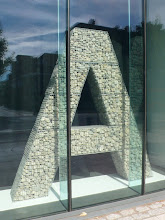This project, which may form the culmination of the geo/graphic design practice, can draw on many of the theoretical references from both the literature and practice review, including explorations of: pace and rhythm that draw on the contradictions between Massey and Tuan’s definition of place; structure and physical form that move beyond the flat space of the map; multi-linear narratives that draw on place as process and post-modern ethnographic writing; and, an holistic engagement with content, design and typography that works at ‘the level of the text’. Within its narrative it could also include aspects of the smaller projects already developed, those listed as potential ideas and those generated via the cultural probes.
A book is a sequence of spaces. Each of these spaces is perceived at a different moment—a book is also a sequence of moments… Written language is a sequence of signs expanding within the space; the reading of which occurs in time. A book is a space-time sequence.
Carrion, 2001, np


No comments:
Post a Comment